Feds: No More Full-Size Fleet Buys (Unless "Necessary")
On the very day that the federal government announced it would buy 101 Chevrolet Volts, President Obama released a new Presidential Memorandum requiring fleet purchases “achieve maximum fuel efficiency.” Regardless of cost, apparently, as the Volt costs over $40,000 and is the size of a $17,000 Chevrolet Cruze. Moreover, the new policy does not appear to reflect the Government Accountability Office’s recent lambasting of government’s use of E85 “flex fuel” vehicles to fulfill previous alt-fuel mandates. Hit the jump for Obama’s full memo
Presidential Memorandum–Federal Fleet Performance
The Federal Government operates the largest fleet of light duty vehicles in America. We owe a responsibility to American citizens to lead by example and contribute to meeting our national goals of reducing oil imports by one-third by 2025 and putting one million advanced vehicles on the road by 2015.
Living up to that responsibility means the Federal fleet should operate only as many vehicles as needed to work efficiently, leveraging Federal purchasing dollars to build manufacturing capacity for more alternative fueled vehicles, and reducing petroleum consumption through efficiency and alternative fuels.
In Executive Order 13514 of October 5, 2009, Federal Leadership in Environmental, Energy, and Economic Performance, my Administration set a goal of reducing petroleum use in the Federal fleet. In order to provide guidance to executive departments and agencies (agencies) to help achieve my Administration’s Federal fleet performance goals, and to ensure that agencies are in compliance with Executive Order 13514, I hereby direct the following:
Section 1. Vehicle Technologies. (a) By December 31, 2015, all new light duty vehicles leased or purchased by agencies must be alternative fueled vehicles, such as hybrid or electric, compressed natural gas, or biofuel. Moreover, agency alternative fueled vehicles must, as soon as practicable, be located in proximity to fueling stations with available alternative fuels, and be operated on the alternative fuel for which the vehicle is designed. Where practicable, agencies should encourage development of commercial infrastructure for alternative fuel or provide flex fuel and alternative fuel pumps and charging stations at Federal fueling sites.
(b) Pursuant to motor vehicle management regulations, set forth at 41 C.F.R. 102-34.50, executive fleets are required to achieve maximum fuel efficiency; be limited in motor vehicle body size, engine size, and optional equipment to what is essential to meet agency mission; and be midsize or smaller sedans, except where larger sedans are essential to the agency mission. Within 180 days of the date of this memorandum, any executive fleet vehicles that are larger than a midsize sedan or do not comply with alternative fueled vehicle requirements must be disclosed on agency websites.
(c) The Department of Energy shall assist the United States Postal Service (USPS) in evaluating the best alternative fuel technologies for the USPS fleet.
Sec. 2. Optimum Fleet Size. Within 90 days of the date of this memorandum, the General Services Administration (GSA) shall develop and distribute to agencies a Vehicle Allocation Methodology (VAM) for determining the optimum inventory with emphasis placed on eliminating unnecessary or non-essential vehicles from an agency’s fleet inventory and ensuring lifecycle cost-effectiveness of maintaining such inventory. In addition, the VAM shall address composition for agencies’ light duty fleets based on their missions. In doing so, the GSA shall consider existing Federal VAMs as appropriate. The VAM shall assist agencies in selecting vehicle options based on lifecycle cost analysis, including projected fuel costs, warranty, operations, mileage, maintenance, and disposal.
Sec. 3. Fleet Management. (a) Within 180 days of the GSA’s dissemination of the VAM referenced in section 2 of this memorandum, agencies shall determine their optimal fleet inventory using the VAM, and shall post their optimal fleet inventory targets on agency websites. At the same time, agencies shall submit to the Administrator of General Services (Administrator) fleet management plans to achieve these targets no later than December 31, 2015.
(b) Within 30 days of receiving agency fleet management plans, the Administrator shall submit a summary of the plans to the Director of the Office of Management and Budget and to the Chair of the Council on Environmental Quality.
(c) Within 90 days of receiving agency fleet management plans, the Administrator shall provide each agency and military service with recommendations for the acquisition of alternative fueled vehicles to implement fleet optimization plans, including shared fleet-on-demand services where applicable.
(d) Agencies shall incorporate new fleet management plans into their Annual Strategic Sustainability Performance Plans prepared in furtherance of Executive Order 13514, beginning with their June 2012 plan submission.
Sec. 4. Applicability. (a) With respect to law enforcement and emergency vehicles, the GSA shall, within 180 days of the date of this memorandum, and in coordination with the Departments of Defense, Homeland Security, Justice, and the Treasury, and other appropriate agencies, issue guidance to agencies on the applicability and implementation of alternative fueled vehicle requirements.
(b) Consistent with the guidance developed in section 4(a) of this memorandum, the head of an agency may exempt vehicles used for law enforcement, protective, emergency response, or military tactical operations of that agency from the provisions of this memorandum.
(c) This memorandum shall apply to the activities, personnel, resources, and facilities of each agency that are located within the United States. The head of an agency may apply this memorandum to activities, personnel, resources, and facilities
of the agency that are not located within the United States, to the extent the head of the agency determines that doing so is in the interest of the United States.
Sec. 5. Definitions. (a) “Alternative fueled vehicle” means an alternative fuel vehicle as defined by Executive Order 13514 and an alternative fueled vehicle as defined by 42 U.S.C. 13211(3), including a “new qualified fuel cell motor vehicle” as defined in 26 U.S.C. 30B(b)(3) and a “new qualified hybrid motor vehicle” as defined in 26 U.S.C. 30B(d)(3).
(b) “Agency” means an agency as defined in Executive Order 13514.
(c) “United States” means the fifty States, the District of Columbia, the Commonwealth of Puerto Rico, Guam, American Samoa, the United States Virgin Islands, and the Northern Mariana Islands, and associated territorial waters and airspace.
Sec. 6. General Provisions. (a) This memorandum shall be implemented consistent with applicable law, including international trade obligations, and subject to the availability of appropriations.
(b) Nothing in this memorandum shall be construed to impair or otherwise affect:
(1) authority granted by law to a department, agency, or the head thereof; or
(2) functions of the Director of the Office of Management and Budget relating to budgetary, administrative, or legislative proposals.
(c) This memorandum is not intended to, and does not, create any right or benefit, substantive or procedural, enforceable at law or in equity by any party against the United States, its departments, agencies, or entities, its officers, employees, or agents, or any other person.
BARACK OBAMA
More by Edward Niedermeyer
Latest Car Reviews
Read moreLatest Product Reviews
Read moreRecent Comments
- Jeff Good find I cannot remember when I last saw one of these but in the 70s they were all over the place.
- CoastieLenn Could be a smart move though. Once the standard (that Tesla owns and designed) is set, Tesla bows out of the market while still owning the rights to the design. Other companies come in and purchase rights to use it, and Tesla can sit back and profit off the design without having to lay out capital to continue to build the network.
- FreedMike "...it may also be true that they worry that the platform is influencing an entire generation with quick hits of liberal political thought and economic theory."Uh...have you been on TikTok lately? Plenty of FJB/MAGA stuff going on there.
- AZFelix As a child I loved the look and feel of the 'woven' black vinyl seat inserts.
- Aja8888 Maybe he's putting the cost savings into Cybertruck production?


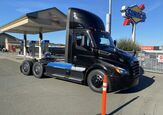













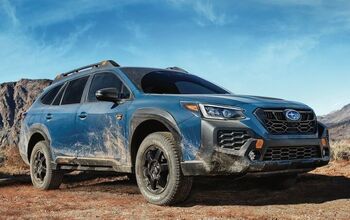


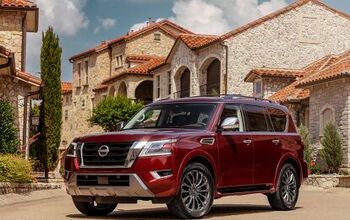

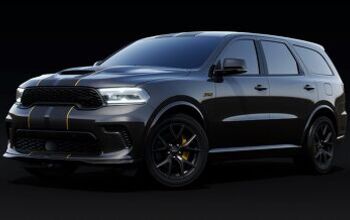

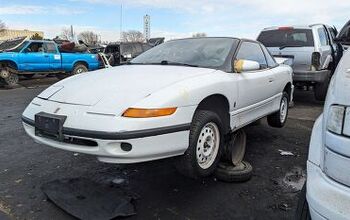
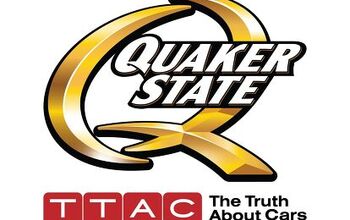
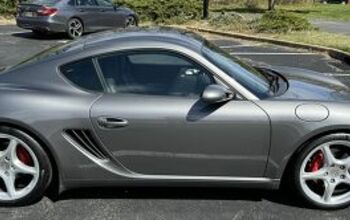


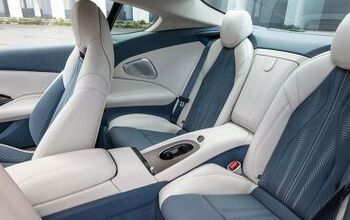
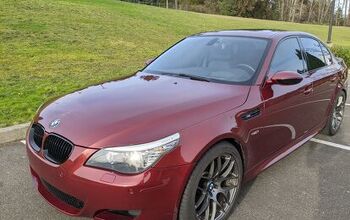
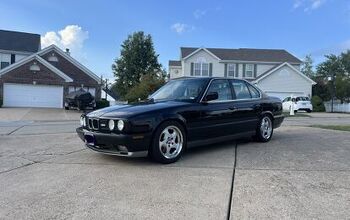
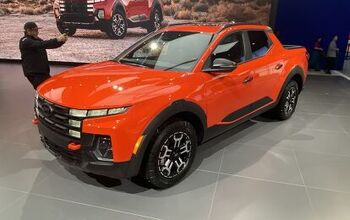

Comments
Join the conversation
No doubt its the choice between funding pensions and Insane Panther Love. While your at it Mr. President, try parking Air Force 1 once in a while and using a stealth generic Gulfstream. The Secret Service Circus when you come to esp. Chicago is a bit silly.
Coming from experience going to the US Gov't fleet auctions over the years, up through 1990-91 or so with my Dad, I saw A LOT of compacts of the day like Chevy Novas, Ford Fairmonts, Chevy Citations, Chrysler K cars, Ford Tempos and of course there WERE larger cars but by the 1980's, they were Celebrities and the like and that's the run of the mill fleet cars too as they sold surplus trucks used for various departments where necessary and some Chevy Blazers (full size) as well as Ford Broncos, some with their rear seats missing, full sized vans and I believe mini vans too. My Dad bought several of these cars over the years, beginning with larger mid sized vehicles such as the '66 or 67 Plymouth Fury that within a few months had a collapsed cylinder, this being 1972 or so and it was traded with friend for I think a '70 or 71 Plymouth Fury III 4 door and later had a '71 Ford Custom then a 1975 Plymouth Gran Fury that I think he got from the state as a former unmarked police cruiser as it has the 360 V8 in it. But since 1979, he's bought compacts beginning with a '74 Chevy Nova with the 250 inline 6 and automatic and not much else then a 78 Ford Fairmont with the addition of carpeting and an AM radio but otherwise a base inline 6/auto 4 door, then an 83 Chevy Citation, same thing, but with AC this time and full wheel covers instead of dog dish caps and lastly, a basic 87 Plymouth Reliant sans AC for my middle sister and by then, it 1990 or so and the cars were ceasing to be the great values they once were as they became better equipped and thus more expensive and desirable. But to reduce corporate fleet mileage is ALWAYS a good thing IMO and ensuring that the various departments keep to smaller sized cars as much as possible that also get good mileage and can utilize various types of fuels is always a good idea, especially if done right, which this might be since it looks like they are they are reasonable here in the initial stage of this dictum in any case.